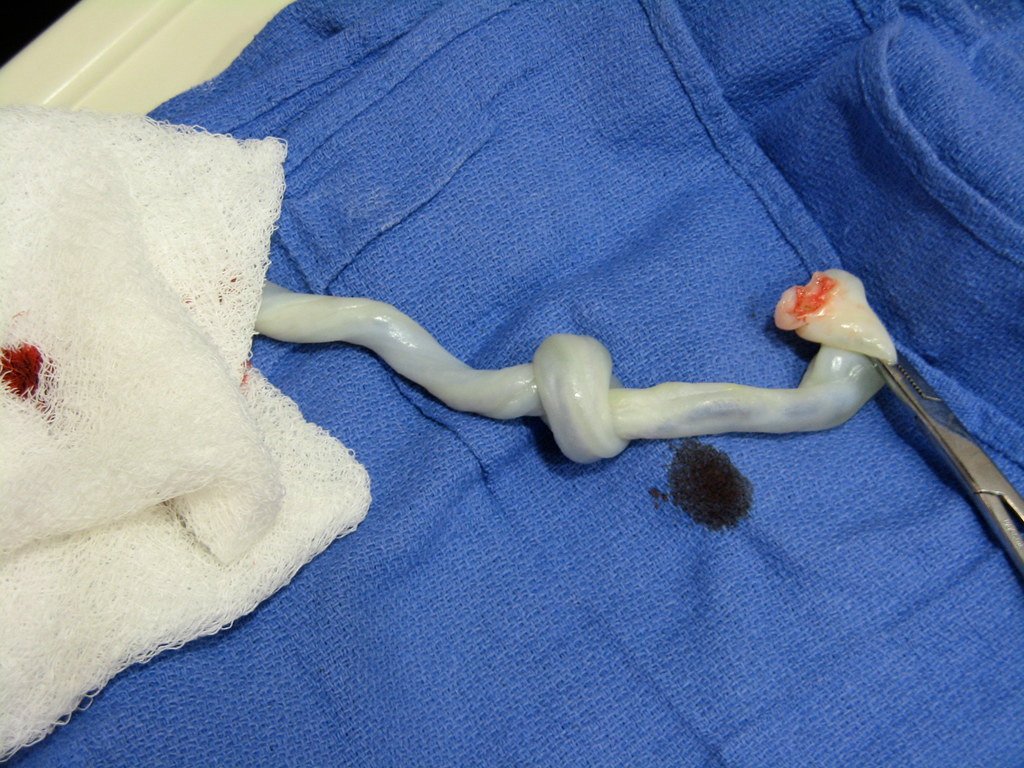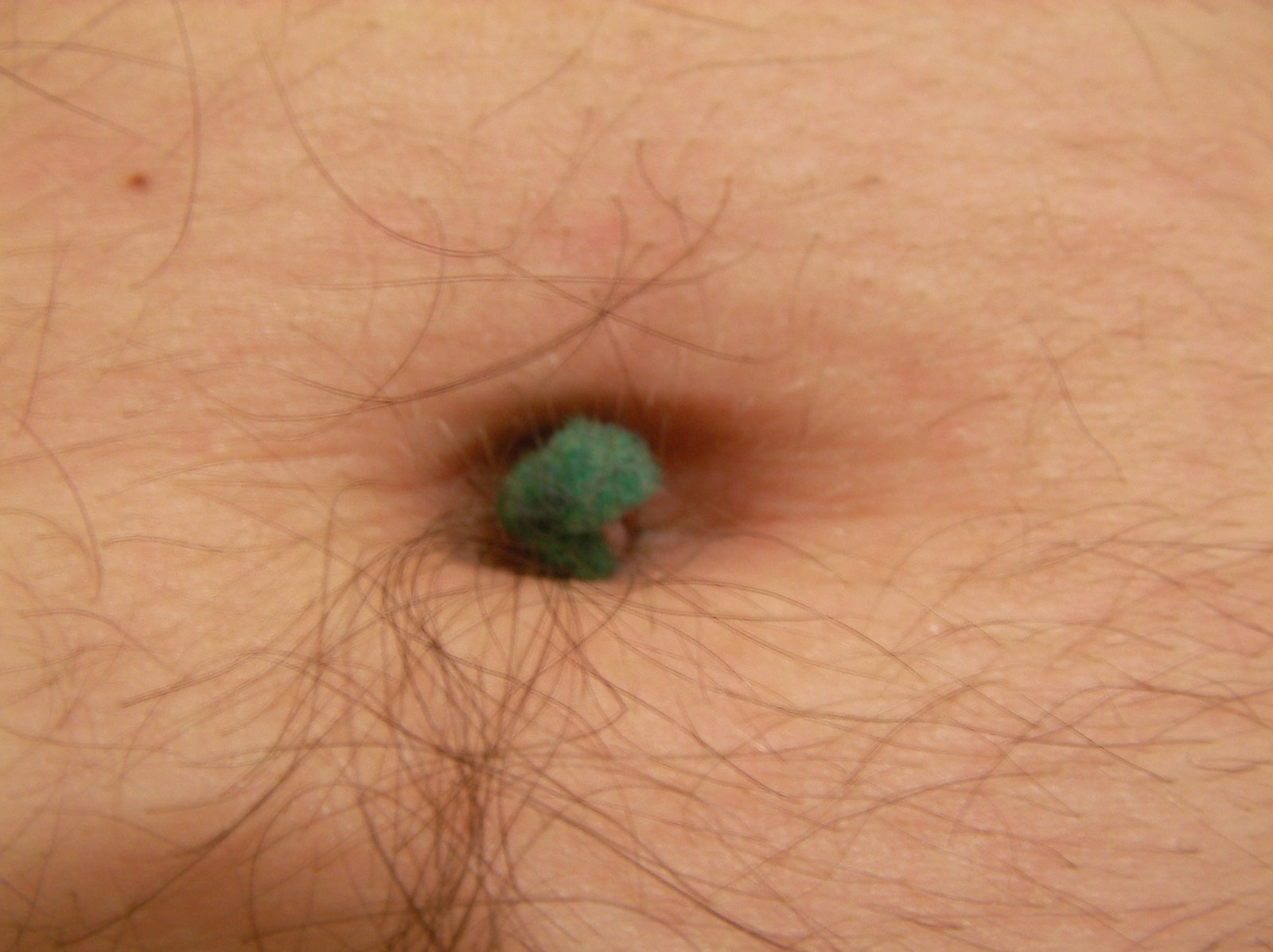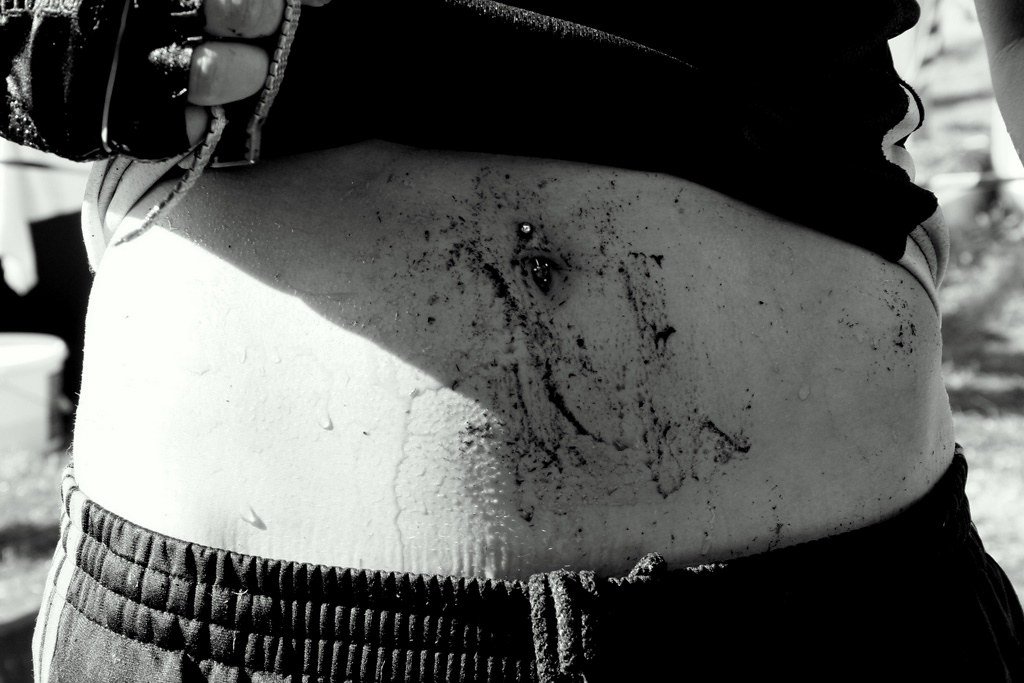Every morning, millions of people glance down at their stomachs while getting dressed, catching sight of that curious little dimple or protrusion right in the center of their abdomen. Most barely give it a second thought, yet this tiny feature holds one of the most profound stories in human biology. Your belly button isn’t just a random indent or bump on your body—it’s a testament to your earliest relationship, a permanent reminder of the most intimate connection you’ve ever had with another human being.
The Umbilical Cord Connection

Before you took your first breath, before your heart started beating independently, you were connected to your mother through a remarkable lifeline called the umbilical cord. This thick, rope-like structure served as your personal highway for nutrients, oxygen, and waste removal during your nine months in the womb. The cord contained three blood vessels: two arteries carrying waste products away from you and one vein delivering fresh, oxygenated blood and nutrients from your mother’s placenta.
Think of it like being plugged into the ultimate life support system. Every bite of food your mother ate, every breath she took, every glass of water she drank—all of it was filtered and delivered directly to you through this incredible biological umbilical pipeline. Without this connection, human development as we know it would be impossible.
The Moment of Independence

The moment you were born marked the most dramatic transition of your entire life. Within seconds of emerging from the womb, medical professionals clamped and cut your umbilical cord, severing the physical connection that had sustained you for months. This wasn’t just a medical procedure—it was your official graduation to independent life, your first step toward biological self-sufficiency.
The remaining stump of umbilical cord attached to your belly gradually dried up and fell off within the first few weeks of life, leaving behind what we now call your navel or belly button. This healing process created a unique scar that would remain with you forever, making your belly button quite literally your very first scar.
Innies vs Outies: The Great Divide

One of the most fascinating aspects of belly buttons is their incredible diversity. Roughly 90% of people have “innie” belly buttons, where the scar tissue forms a small depression or cave-like indent. The remaining 10% have “outie” belly buttons, where the tissue protrudes outward like a small button or knob.
Contrary to popular belief, whether you have an innie or outie has nothing to do with how the doctor cut your umbilical cord. The shape of your belly button is determined by how your abdominal muscles and scar tissue heal after the cord falls off. Some people develop extra scar tissue that pushes outward, while others heal with tissue that pulls inward.
Interestingly, having an outie belly button can sometimes indicate a small umbilical hernia that occurred during the healing process. While this sounds scary, most umbilical hernias in newborns are completely harmless and often resolve on their own as the child grows.
The Anatomical Marvel

From a purely anatomical perspective, your belly button represents one of the most complex healing processes your body ever undertakes. When the umbilical cord is cut, your body must quickly seal off blood vessels, close skin layers, and reorganize abdominal muscles—all while maintaining the structural integrity of your core.
The belly button sits at the center of your abdominal wall, precisely where several major muscle groups converge. It’s located at the intersection of your rectus abdominis muscles (your “six-pack” muscles) and serves as an anchor point for the linea alba, the fibrous structure that runs down the middle of your abdomen.
Cultural and Symbolic Significance

Throughout human history, belly buttons have held deep cultural and spiritual significance across numerous civilizations. In many cultures, the navel is considered the center of the body’s energy, representing the connection between the physical and spiritual worlds. Ancient Greeks believed the belly button was the center of the universe, while Hindu and Buddhist traditions consider it a crucial chakra point.
Some cultures view the belly button as sacred because it represents the first connection between mother and child. In certain African traditions, the umbilical cord is ceremonially buried to symbolically ground the child to their ancestral homeland. These practices highlight how universally significant this small body part has been throughout human civilization.
The Belly Button’s Role in Modern Medicine

Modern medicine has found surprising uses for belly buttons beyond their original biological function. Laparoscopic surgery, also known as “keyhole surgery,” often uses the belly button as an entry point for surgical instruments. The natural depression provides an ideal location for small incisions that heal with minimal scarring.
Additionally, belly buttons have become crucial in certain emergency medical procedures. In newborns experiencing severe medical complications, doctors can sometimes access major blood vessels through the umbilical stump, providing a lifesaving pathway for medications and treatments. This medical application demonstrates how your belly button retains its life-supporting potential even after birth.
The Microbial Universe Within

Your belly button harbors one of the most diverse microbial ecosystems on your entire body. Scientists have discovered that the average belly button contains around 67 different species of bacteria, creating a miniature biological universe right in your navel. This bacterial diversity is comparable to what you might find in soil samples from a tropical rainforest.
The warm, moist environment of your belly button creates perfect conditions for bacterial growth. While this might sound concerning, most of these bacteria are completely harmless and actually help protect your body from potentially dangerous microorganisms. However, proper hygiene is still important to prevent the buildup of debris and potentially harmful bacteria.
Researchers have found that people with deeper belly buttons tend to have more diverse bacterial communities, while those with shallower navels have less microbial variety. This research has contributed to our understanding of human microbiomes and their role in overall health.
Evolutionary Perspective

From an evolutionary standpoint, belly buttons represent one of the most successful biological innovations in mammalian reproduction. The ability to nourish developing offspring internally through placental connections allowed mammals to protect their young during the most vulnerable stages of development.
All placental mammals have some form of belly button, though they’re not always as prominent as in humans. The visibility of human belly buttons is partly due to our upright posture and relatively hairless skin, which makes the navel more noticeable than in other mammals.
This evolutionary adaptation has been so successful that it’s remained virtually unchanged for millions of years, proving the effectiveness of the umbilical cord system for mammalian reproduction.
Common Belly Button Problems

Despite being just a scar, belly buttons can experience various medical issues throughout life. Umbilical hernias can occur when abdominal tissue pushes through the weakened area around the navel, creating a visible bulge. While these are common in infants, they can also develop in adults due to factors like pregnancy, obesity, or heavy lifting.
Belly button infections, while relatively rare, can occur when bacteria accumulate in the deep folds of the navel. Symptoms include redness, swelling, discharge, and sometimes an unpleasant odor. These infections are usually easily treatable with proper cleaning and, in some cases, antibiotics.
Some people develop belly button stones—small, hard deposits of dead skin cells, hair, and other debris that can form in deep navels. While harmless, these can cause discomfort and should be removed by a medical professional.
The Psychology of Belly Buttons

Interestingly, belly buttons can have psychological significance beyond their biological function. Some people experience strong emotional reactions to belly buttons, either positive or negative. Omphalophobia, the fear of belly buttons, is a real condition that affects some individuals, causing anxiety or distress when seeing or touching navels.
On the flip side, some people find belly buttons particularly attractive or fascinating. This psychological response might be rooted in our subconscious recognition of the belly button as a symbol of our earliest human connection.
The way people feel about their own belly buttons can also impact body image and self-confidence, particularly in cultures where showing the midriff is common or fashionable.
Belly Button Piercing and Body Modification

Belly button piercings have become increasingly popular forms of body modification, particularly among young adults. However, the navel presents unique challenges for piercing due to its location and the way it moves with body motion. The constant flexing and stretching of the abdominal area can make belly button piercings more prone to complications than other types of body piercings.
Proper aftercare is crucial for belly button piercings due to the area’s tendency to trap moisture and bacteria. The healing process can take several months, and complications like infections or rejection of the jewelry are not uncommon.
Despite these challenges, belly button piercings remain popular because they can be easily concealed when necessary while still allowing for personal expression when desired.
Belly Buttons in Art and Literature

Throughout history, belly buttons have appeared in art and literature as symbols of birth, connection, and humanity. Ancient sculptures often emphasized the navel as a central point of the human form, representing the connection between earthly and divine realms.
In literature, belly buttons have been used metaphorically to represent origins, centers, or points of connection. Writers have described belly buttons as “the first kiss,” “the center of being,” or “the mark of mortality,” highlighting their symbolic importance in human experience.
Modern art continues to explore belly button imagery, often focusing on themes of identity, origin, and human connection. These artistic interpretations remind us that even the smallest parts of our bodies carry profound meaning.
The Science of Belly Button Lint

One of the most commonly asked questions about belly buttons involves the mysterious appearance of lint or fuzz that seems to accumulate there. Scientific research has actually investigated this phenomenon, revealing that belly button lint consists primarily of cotton fibers from clothing, mixed with dead skin cells, body hair, and sometimes small amounts of fat or protein.
The lint accumulation occurs because body hair around the navel acts like tiny hooks, catching and directing clothing fibers toward the belly button. The warm, moist environment of the navel then traps these fibers, creating the familiar lint buildup that many people notice.
Interestingly, research has shown that people with more body hair and deeper belly buttons tend to accumulate more lint, while those with less hair or shallower navels collect less debris.
Belly Button Reconstruction Surgery

Some people are born with belly button abnormalities or lose their navels due to surgical procedures, leading to the development of umbilicoplasty—belly button reconstruction surgery. This procedure can create a natural-looking belly button for those who want to restore their navel’s appearance.
The surgery involves creating a small depression in the abdominal wall and shaping the surrounding tissue to mimic a natural belly button. While primarily cosmetic, this procedure can have significant psychological benefits for people who feel self-conscious about their missing or unusual navel.
Recovery from umbilicoplasty typically takes several weeks, and results are generally permanent. The procedure has become increasingly sophisticated, with surgeons able to create very natural-looking results that are virtually indistinguishable from natural belly buttons.
Temperature Regulation and Belly Buttons

Your belly button plays a small but interesting role in your body’s temperature regulation system. The area around your navel contains a higher concentration of blood vessels compared to other parts of your abdominal skin, making it more sensitive to temperature changes.
This increased sensitivity means that your belly button can serve as an early warning system for temperature changes in your core body temperature. Some people notice that their navel feels cold when they’re getting sick or experiencing other health issues that affect their body temperature.
The belly button’s location at the center of your abdomen also makes it a useful reference point for medical professionals checking core body temperature, as it’s located close to major organs and blood vessels.
Belly Buttons and Pregnancy

Pregnancy brings dramatic changes to belly buttons as the expanding uterus pushes against the abdominal wall. Many women with innie belly buttons find that their navels become flat or even pop out during pregnancy, creating a temporary outie. This change is completely normal and usually reverses after childbirth.
The stretching of abdominal skin during pregnancy can also cause the belly button to become more prominent or change shape. Some women develop a dark line running from their belly button downward, called the linea nigra, which is caused by hormonal changes during pregnancy.
In rare cases, pregnancy can cause umbilical hernias to develop or worsen, as the growing baby puts pressure on the weakened area around the navel. While usually not dangerous, these hernias should be monitored by healthcare providers.
The Future of Belly Button Research

Scientists continue to study belly buttons from various perspectives, including their role in human development, their microbial ecosystems, and their potential medical applications. Recent research has focused on understanding how the diverse bacterial communities in belly buttons might influence overall health and immunity.
Some researchers are exploring whether belly button bacteria could be used as indicators of health status or disease risk. The unique microbial signature of each person’s navel might provide insights into their overall microbial health and potentially help doctors detect certain conditions earlier.
Future medical applications might include using belly buttons as access points for new types of minimally invasive procedures or as locations for implantable medical devices that need to be close to the body’s core.
Conclusion

Your belly button represents far more than just a simple scar on your abdomen. It’s a permanent reminder of your earliest relationship, a testament to the incredible process of human development, and a unique identifier that connects you to the universal human experience of birth and growth. From its crucial role in prenatal development to its ongoing functions in adulthood, your navel serves as a fascinating intersection of biology, culture, and personal history.
The next time you catch sight of your belly button, take a moment to appreciate the remarkable story it tells about your journey from a tiny developing embryo to the complex individual you are today. This small, often overlooked feature carries within it the memory of your very first connection to another human being and the incredible biological processes that made your existence possible.
Who would have thought that something so small could hold such profound significance in the grand story of human life?




